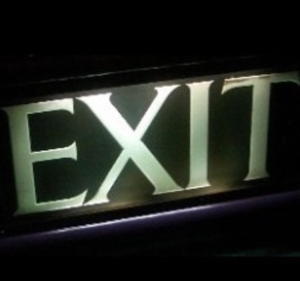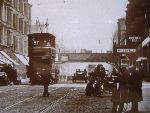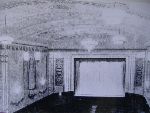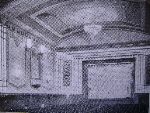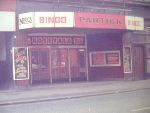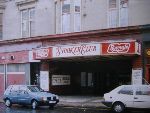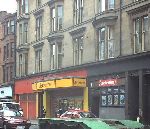Scottish Cinemas and Theatres
467 Dumbarton Road, Partick
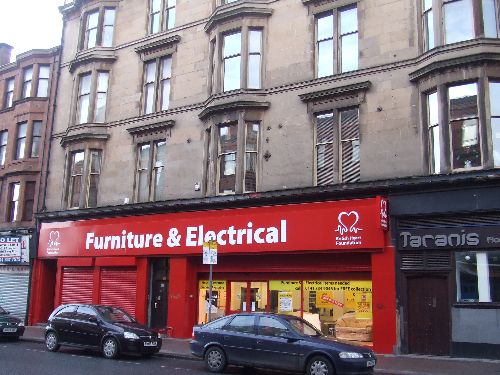
| The Rosevale opened in 1920, to designs by the architects firm Duff and Cairns. It was built for the Rosevale Cinema Company, and booked by Alexander B King.
See pictures of the auditorium exterior in the back court here.The Rosevale was the largest of the back-court style cinemas - its entrance was nondescript, a long narrow corridor under the tenement above. The auditorium was in the back court of the tenements surrounding it, and its massive bulk greatly reduced the light available to the flats around. It originally sat 1,894, with a large balcony, and a Christie organ. The hall had a barrel-vaulted ceiling, and columns along the side walls. The cinema was such a success, that in 1932 it was enlarged, with buildings behind the auditorium demolished, and the main auditorium extended at the screen end, to create a new capacity of 2,100. The new decoration included four deco plasterwork motifs on the ceiling, surrounding a central star-shaped motif, from which hung a large chandelier.
The Rosevale closed as a cinema in 1965, and the the building was used for bingo until 1981. It was then a snooker club until 1993, before being converted for supermarket, and then in 2006, an electrical shop. Bingo use involved few changes to the auditorium; the decoration was simplified and a green-and-purple colour-scheme introduced. The balcony was largely untouched; the seats remaining in situ. At some point, probably during snooker-hall use, the balcony foyer was altered to enlarge the waiting space, create new toilets, and block off access to the balcony itself.
The conversion to shop use involved further alterations - the gutting of the ground floor level and insertion of a plain suspended ceiling, and the removal of the stairs from the main entrance to the balcony in particular. The cinema-style canopy on the exterior survived until 2005, when it was removed in the latest adaptations for shop use.
Despite the many alterations over the years, a survey in February 2006 showed that the cinema is largely intact at balcony level. Although access can now only be gained via a fire-exit stairway, once in the balcony very little has changed since the early 1980s. Many of the cinema seats are still in place with their original upholstery; the ceiling in particular survives remarkably entirely intact, decorative grills and plasterwork flourishes and columns included.
Archive photo from 1975 here, courtesy of Norrie Mcnamee. |
Unless otherwise
specified, all photographs and other material copyright (c) 2001
- 2022 Gordon Barr and Gary Painter.
All rights reserved. Permission for use elsewhere normally granted, but please ask first!
No attempt is made to infringe any existing copyrights or trademarks. Please contact the editors in case of any queries.
All rights reserved. Permission for use elsewhere normally granted, but please ask first!
No attempt is made to infringe any existing copyrights or trademarks. Please contact the editors in case of any queries.
